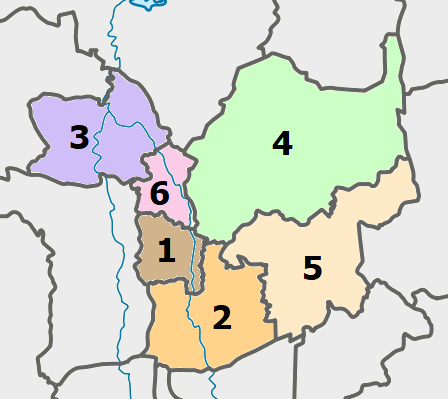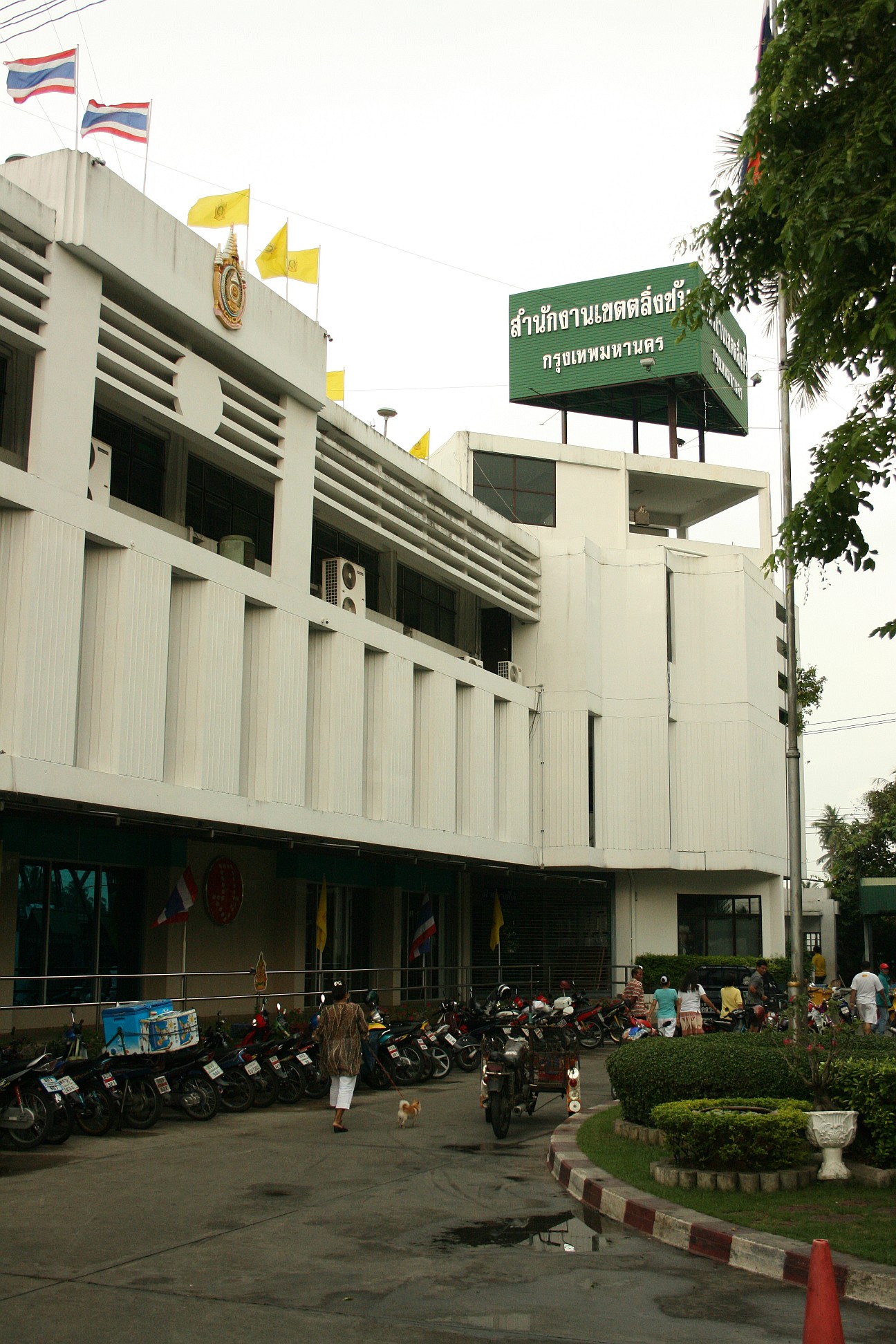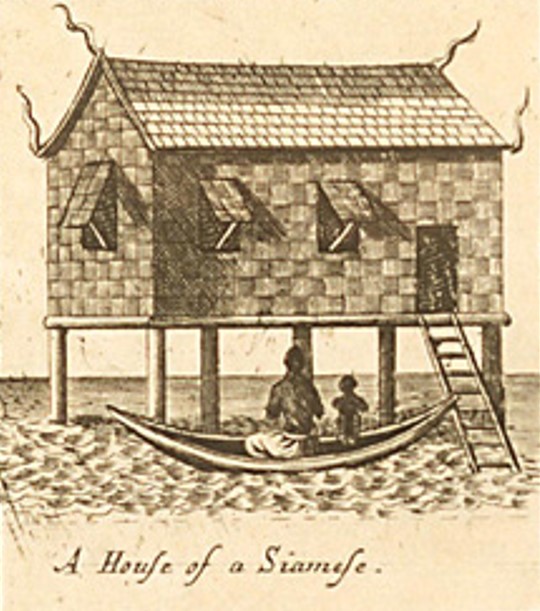|
Wat Champa
Wat Champa ( th, วัดจำปา, ) is an ancient Thai Buddhist temple in Bang Ramat Sub-District, Taling Chan District, Bangkok's Thonburi side. History Wat Champa (literally: '' champak temple'') was built in the late Ayutthaya period and underwent a massive restoration in the King Rama III's reign during early Rattanakosin period. The gables of the ordination hall of temple are studded with Chinese porcelain and the window frames are made of elaborately carved wood. Behind this hall is a pool of holy water that is more than 100 years old, it never runs dry and the water is believed to cure illnesses. left, Luang Por Chokdee The principle Buddha statue named "Luang Por Chokdee" (หลวงพ่อโชคดี), which means "lucky venerable father". Tourism Wat Champa Community or Ko San Chao Community (ชุมชนเกาะศาลเจ้า) is a community of locals who living around this temple. The community is bounded by highways and urban develop ... [...More Info...] [...Related Items...] OR: [Wikipedia] [Google] [Baidu] |
Central Thailand
Central Thailand (Central plain) or more specifically Siam (also known as Suvarnabhumi and Dvaravati) is one of the regions of Thailand, covering the broad alluvial plain of the Chao Phraya River. It is separated from northeast Thailand (Isan) by the Phetchabun mountain range. The Tenasserim Hills separate it from Myanmar to the west. In the north it is bounded by the Phi Pan Nam Range, one of the hilly systems of northern Thailand. The area was the heartland of the Ayutthaya Kingdom (at times referred to as Siam), and is still the dominant area of Thailand, containing as it does, the world's most primate city, Bangkok. Definition The grouping of Thai provinces into regions follow two major systems, in which Thailand is divided into either four or six regions. In the six-region system, commonly used in geographical studies, central Thailand extends from Sukhothai and Phitsanulok Provinces in the north to the provinces bordering the Gulf of Thailand in the south, excluding the m ... [...More Info...] [...Related Items...] OR: [Wikipedia] [Google] [Baidu] |
Buddha Statue
Much Buddhist art uses depictions of the historical Buddha, Gautama Buddha, which are known as Buddharūpa (literally, "Form of the Awakened One") in Sanskrit and Pali. These may be statues or other images such as paintings. The main figure in an image may be someone else who has obtained Buddhahood, or a boddhisattva, especially in the various traditions of Mahayana Buddhism. Other Buddhas and bodhisattvas in art have become increasingly common over the centuries, perhaps now outnumbering images of the historical Buddha. In its first centuries Buddhism was largely or entirely aniconic, not showing the person of Buddha except by symbols and relics. This changed, and figures of the Buddha became very common in the art of Gandhara and Gupta art. As forms of esoteric Buddhism developed, other figures from the expanding array of Buddhist sacred persons became more prominent. In Theravada Buddhism this was much less the case, and figures of the historical Buddha remain the most co ... [...More Info...] [...Related Items...] OR: [Wikipedia] [Google] [Baidu] |
Taling Chan District
Taling Chan ( th, ตลิ่งชัน, ) is one of the 50 districts (''khet'') of Bangkok, Thailand. Its neighbours, clockwise from the north, are Bang Kruai district of Nonthaburi province and Bang Phlat, Bangkok Noi, Bangkok Yai, Phasi Charoen, Bang Khae, and Thawi Watthana Districts of Bangkok. History Taling Chan is an old district back when there was Thonburi province. Now Thonburi is merged into Bangkok. In 1998, part of the district was split into a new Thawi Watthana district. Historically, much of the area was used as orchards and kitchen gardens, many remaining there today. It has been called "Bangkok's Kitchen". The landscape of Taling Chan about 1,000 years ago is believed to have been part of the Chao Phraya River delta. The area was a muddy mangrove forest and there was no evidence of human settlement. Two areas of Taling Chan, Bang Ramat and Bang Chueak Nang, were mentioned to in the ''Kamsuan Samut'' of the Ayutthaya period. They are regarded as amo ... [...More Info...] [...Related Items...] OR: [Wikipedia] [Google] [Baidu] |
Bangkok Post
The ''Bangkok Post'' is an English-language daily newspaper published in Bangkok, Thailand. It is published in broadsheet and digital formats. The first issue was sold on 1 August 1946. It had four pages and cost one baht, a considerable amount at the time when a baht was a paper note. It is Thailand's second oldest newspaper and the oldest still in publication. The daily circulation of the ''Bangkok Post'' is 110,000, 80 percent of which is distributed in Bangkok and the remainder nationwide. From July 2016 until mid-May 2018, the editor of the ''Bangkok Post'' was Umesh Pandey. On 14 May 2018, Umesh was "forced to step down" as editor after refusing to soften coverage critical of the ruling military junta. History The ''Bangkok Post'' was founded by Alexander MacDonald, a former OSS officer, and his Thai associate, Prasit Lulitanond. Thailand at the time was the only Southeast Asian country to have a Soviet Embassy. The U.S. embassy felt it needed an independent, but generall ... [...More Info...] [...Related Items...] OR: [Wikipedia] [Google] [Baidu] |
Siriraj Piyamaharajkarun Hospital
Siriraj Piyamaharajkarun Hospital (SiPH) () is a hospital operated by the Faculty of Medicine Siriraj Hospital of Mahidol University. It is located in Bangkok on the west bank of the Chao Phraya River, adjacent to Siriraj Hospital and opposite Thammasat University (Tha Phra Chan Campus). The hospital is catered to high-income patients, similarly to Thailand's private hospitals, with one of its aims being to generate revenue for the operation of Siriraj Hospital. History The Faculty of Medicine Siriraj Hospital, Mahidol University was transferred a piece of land adjacent to the Chao Phraya River from the State Railway of Thailand following the board resolutions since 2003 from the cabinet and State Railway of Thailand, and finally on 11 January 2010 with an area of 33 rai, 2 ngan, and 94 square wa (53,976 square meters). King Bhumibol Adulyadej graciously conferred Princess Sirindhorn to lay the foundation stone for the building part of the project 'Siriraj towards a top med ... [...More Info...] [...Related Items...] OR: [Wikipedia] [Google] [Baidu] |
Songthaew
A songthaew ( th, สองแถว, , two rows, , ; lo, ສອງແຖວ, ; ms, dua baris) is a passenger vehicle in Thailand, Laos, Vietnam and Myanmar adapted from a pick-up or a larger truck and used as a share taxi or bus. Overview The songthaew takes its name from the two bench seats fixed along either side of the back of the truck; in some vehicles a third bench is put down the middle of the seating area. Additionally a roof is fitted over the rear of the vehicle, to which curtains and plastic sheeting to keep out rain may be attached. Some vehicles have roofs high enough to accommodate standing passengers within the vehicle. More typically, standing passengers occupy a platform attached to the rear. In Chiang Mai and its surroundings, locals may call them ''rot si daeng'' (literally "car red" – a reference to their most common colour in the area, Thai รถสีแดง), ''rot daeng'', or sometimes ''si rot''. The Isuzu Faster and Toyota Hilux are example ... [...More Info...] [...Related Items...] OR: [Wikipedia] [Google] [Baidu] |
List Of Bus Routes In Bangkok
Citybuses in Greater Bangkok are served by a state-owned citybus operator Bangkok Mass Transit Authority (BMTA) and private operators sub-contracted by either BMTA or Department of Land Transport. Since began operation, BMTA acted as the bangkok bus lines concessions owners. Private operators operated as a sub-contracted, They may run on the same routes as BMTA buses; Example: orange minibuses, cream-blue (or pink) 12 metre buses. These buses have the BMTA symbol on them, mostly seen below the driver's side window. These often follow slightly different route from the main big BMTA-bus or do not run along the whole route. However, these may cause a lot of problems such as reckless driving rushing between two buses from different lines that may serve on the same section of the road, subpar buses quality, and so on. Since 2017, Department of Land Transport introduced the bangkok citybus reform plan aiming to reduce overlapping, serve more area, and makes these lines more profitabili ... [...More Info...] [...Related Items...] OR: [Wikipedia] [Google] [Baidu] |
Taling Chan Floating Market
Taling Chan ( th, ตลิ่งชัน, ) is one of the 50 districts (''khet'') of Bangkok, Thailand. Its neighbours, clockwise from the north, are Bang Kruai district of Nonthaburi province and Bang Phlat, Bangkok Noi, Bangkok Yai, Phasi Charoen, Bang Khae, and Thawi Watthana Districts of Bangkok. History Taling Chan is an old district back when there was Thonburi province. Now Thonburi is merged into Bangkok. In 1998, part of the district was split into a new Thawi Watthana district. Historically, much of the area was used as orchards and kitchen gardens, many remaining there today. It has been called "Bangkok's Kitchen". The landscape of Taling Chan about 1,000 years ago is believed to have been part of the Chao Phraya River delta. The area was a muddy mangrove forest and there was no evidence of human settlement. Two areas of Taling Chan, Bang Ramat and Bang Chueak Nang, were mentioned to in the '' Kamsuan Samut'' of the Ayutthaya period. They are regarded as a ... [...More Info...] [...Related Items...] OR: [Wikipedia] [Google] [Baidu] |
Floating Market
A floating market is a market where goods are sold from boats. Originating in times and places where water transport played an important role in daily life, most floating markets operating today mainly serve as tourist attractions, and are chiefly found in Myanmar, Thailand, Indonesia, Vietnam, Sri Lanka, Bangladesh, and India. Bangladesh The 200-year-old floating market at Kuriana in Swarupkati has become a tourist spot. Guava floating market is a unique market. Hundreds of tourists from home and abroad visit the place every day to enjoy the beauty of the market and its surrounding landscape. Thailand In Thailand, floating markets ( th, ตลาดน้ำ ) are well supported locally and mainly serve as tourist attractions. One of their purposes is to allow domestic visitors and international tourists to be able to experience the culture of riverside shopping. History Historically, the areas adjacent to the rivers were the first to be populated. Thus, most comm ... [...More Info...] [...Related Items...] OR: [Wikipedia] [Google] [Baidu] |
Traditional Thai House
The traditional Thai house ( th, เรือนไทย, , ; ) is a loose collection of vernacular architectural styles employed throughout the different regions of Thailand. Thai houses usually feature a bamboo or wooden structure, raised on stilts and topped with a steep gabled roof. The houses from each of regions of Thailand, Thailand's regions have distinctive styles, which reflect the people's living style, including social and cultural beliefs or religious customs and occupations. Construction Using renewable natural materials including timber and bamboo, the dwellings are often built without the use of metal including nails. Instead pre-cut holes and grooves are used to fit the timber elements into one another, effectively making it a 'prefabricated house'. Regional house style Central Thai traditional house style Thai stilt houses in the Central Thailand, central region are divided into five types. The first type is the single house, which is the stilt house for a singl ... [...More Info...] [...Related Items...] OR: [Wikipedia] [Google] [Baidu] |
Homestay
Homestay (also home stay and home-stay) is a form of hospitality and lodging whereby visitors share a residence with a local of the area (host) to which they are traveling. The length of stay can vary from one night to over a year and can be provided for free (gift economy), in exchange for monetary compensation, in exchange for a stay at the guest's property either simultaneously or at another time (home exchange), or in exchange for housekeeping or work on the host's property (barter economy). Homestays are examples of collaborative consumption and the sharing economy. Homestays are used by travelers; students who study abroad or participate in student exchange programs; and au pairs, who provide child care assistance and light household duties. They can be arranged via certain social networking services, online marketplaces, or academic institutions. Advantages and disadvantages Homestays offer several advantages, such as exposure to everyday life in another location, the opp ... [...More Info...] [...Related Items...] OR: [Wikipedia] [Google] [Baidu] |

.jpg)




.jpg)